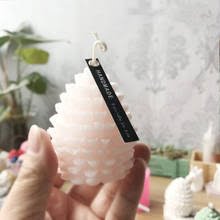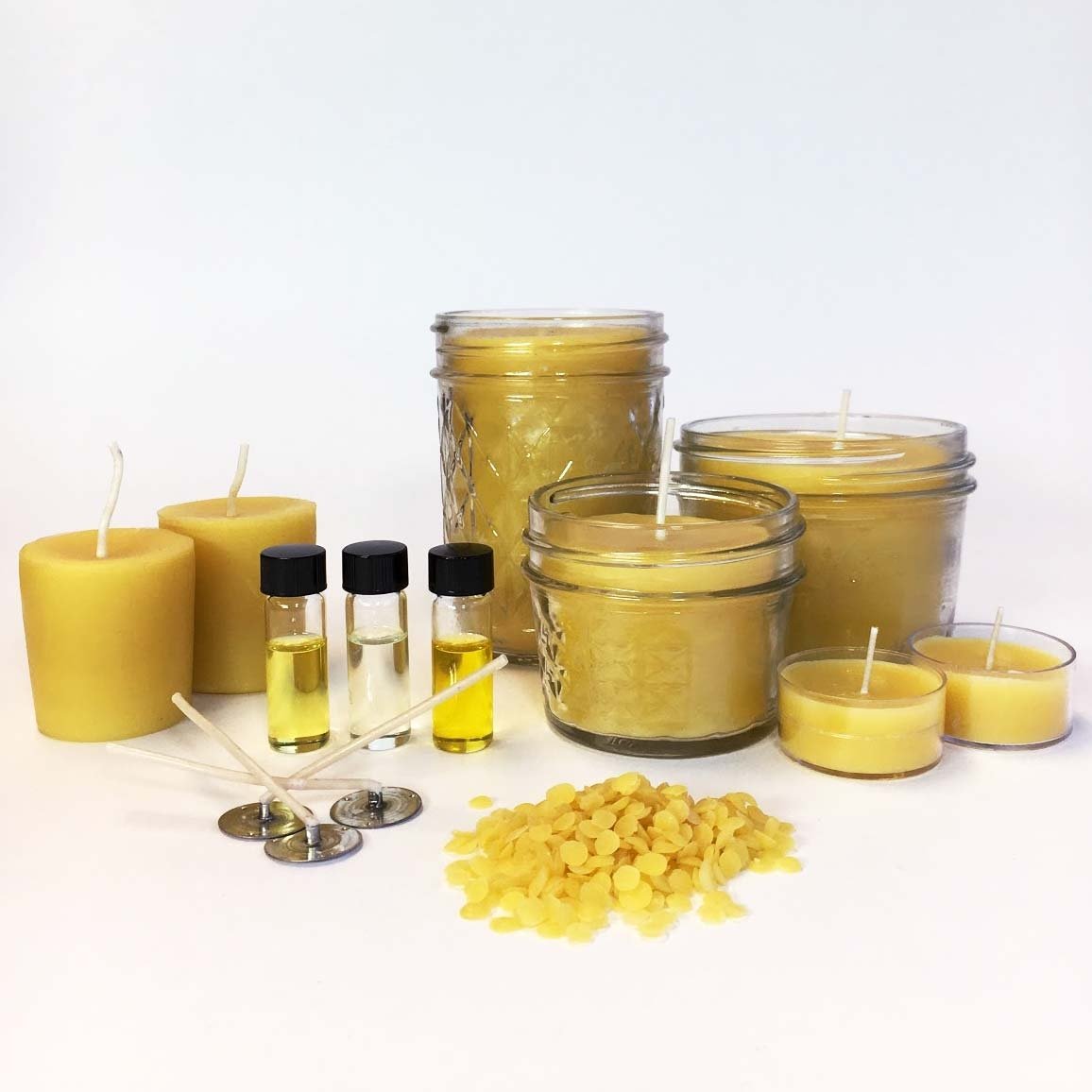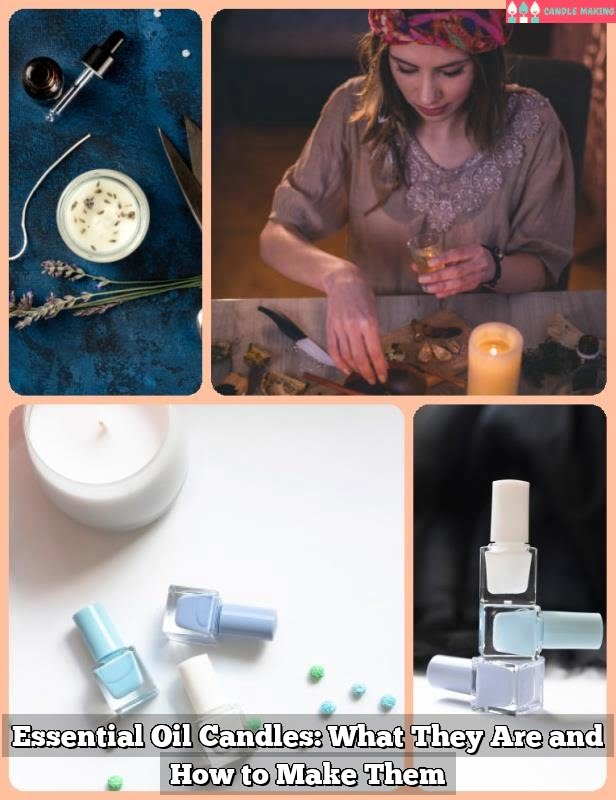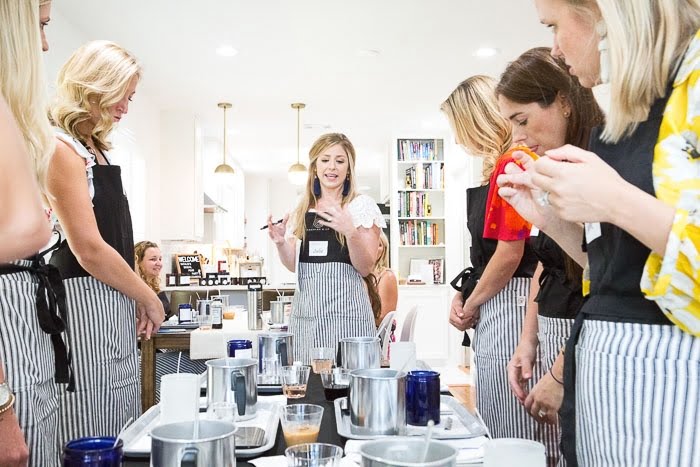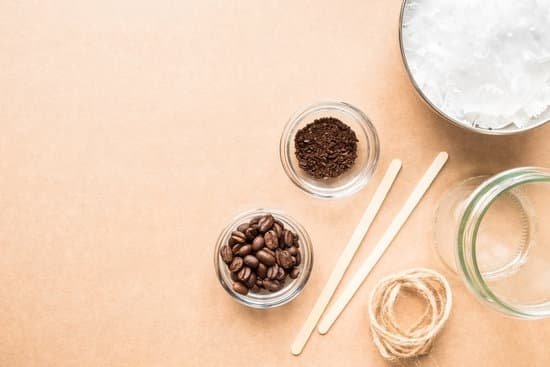When making candles, the amount of essential oil used plays a crucial role in determining the fragrance and overall quality of the final product. Essential oils not only provide pleasant scents but also have various benefits, such as promoting relaxation, reducing stress, and improving mood. In this article, we will explore the significance of essential oils in candle making and delve into the different aspects of using them effectively.
Essential oils are highly concentrated plant extracts obtained through distillation or cold-pressing methods. They are valued for their distinctive fragrances and therapeutic properties. Understanding the various types, properties, and benefits of essential oils is essential for creating candles that not only smell great but also offer potential wellness benefits.
Selecting the right essential oil for your candles is a critical step in achieving the desired scent profile. Factors such as personal preference, intended use of the candle, and even seasonal considerations come into play when choosing from the wide variety of essential oils available. Additionally, understanding how to measure essential oils accurately based on different candle sizes ensures optimal scent performance without overpowering or underwhelming effect.
In this comprehensive guide, we will explore these topics and more to equip you with valuable insights on using essential oils in your candle making endeavors. Whether you are a novice or an experienced candle maker, learning about factors that affect scent strength and best practices for handling and disposing of essential oils will help you enhance your craft.
Let us embark on this aromatic journey together and discover how to create exquisitely scented candles that elevate any space they illuminate.
Understanding Essential Oils
Essential oils play a crucial role in candle making, as they are responsible for adding fragrance and therapeutic benefits to the final product. In this section, we will delve into understanding essential oils, including the types available, their properties, and the benefits they bring to candles.
There is a wide variety of essential oils to choose from when making candles. The type of essential oil you select will greatly impact the scent profile and overall experience of your candle. Some popular options include lavender, vanilla, citrus, eucalyptus, and rosemary. Each essential oil has its own unique aroma and potential health benefits.
In addition to their fragrance, essential oils also offer various properties that can enhance the quality of your candles. For example, lavender essential oil is known for its calming and soothing effects, while eucalyptus essential oil can help with respiratory issues. It’s important to consider these properties when selecting an essential oil for your candles.
| Essential Oil Type | Properties | Benefits |
|---|---|---|
| Lavender | Calming and soothing | Promotes relaxation and stress relief |
| Citrus (e.g., orange, lemon) | Energizing and uplifting | Boosts mood and increases focus |
| Eucalyptus | Refreshing and invigorating | Aids respiratory health and relieves congestion |
By carefully considering the type of essential oil you use in your candles, you can create a unique ambiance while reaping the benefits of aromatherapy.
Essential Oil Selection
When it comes to making candles, choosing the right essential oil is crucial in determining the fragrance and overall quality of the final product. With so many options available, it can be overwhelming to decide which oil will best complement your candles. Here are some tips on how to choose the right essential oil for your candles:
- Consider Your Desired Scent: The first step in selecting an essential oil for your candles is to consider the scent you want to achieve. Whether you prefer floral, citrusy, woody, or herbal fragrances, there is an essential oil that will meet your preferences. Research different oils and their scent profiles to find one that aligns with your vision.
- Assess Essential Oil Quality: The quality of essential oils can vary greatly depending on factors such as purity, sourcing, and production methods. It is important to choose high-quality oils that are free from synthetic additives or fillers. Look for oils that are labeled as 100% pure and therapeutic grade.
- Consider Compatibility with Wax Type: Different waxes have varying levels of compatibility with essential oils. While some waxes may work well with a wide range of oils, others may have limited compatibility due to their composition or melting point. Be sure to research the compatibility between your chosen wax type and essential oil before proceeding.
| Essential Oil | Scent Profile |
|---|---|
| Lavender | Floral, herbaceous |
| Orange | Citrusy |
| Sandalwood | Woody, earthy |
| Patchouli | Musky, spicy |
| Peppermint | Minty, refreshing |
Remember that the scent of essential oils can vary depending on their concentration in the candle. It is always recommended to start with a small amount and adjust as needed to achieve your desired fragrance intensity.
Measuring Essential Oils
Once you have selected the perfect essential oil for your candles, it is important to know the proper dosage for different candle sizes. This will ensure that you achieve the desired scent strength without overpowering or underwhelming the fragrance of your candles.
Here are some guidelines to help you measure essential oils correctly based on different candle sizes:
Tealight Candles
- For a standard tealight candle, which is usually 1.5 inches in diameter and 0.6 inches in height, use approximately 5-7 drops of essential oil.
- Adjust the number of drops based on your personal preference and the strength of the specific essential oil being used.
Container Candles
- For small container candles, around 2 to 4 inches in diameter, use approximately 1 ounce (30 ml) of fragrance oil per pound (450 grams) of wax.
- Increase the amount slightly for larger container candles, around 4 to 6 inches in diameter, using about 1.25 ounces (37 ml) of fragrance oil per pound (450 grams) of wax.
- It is recommended to test a small batch before making a larger quantity to ensure you achieve the desired scent strength.
Pillar Candles
- For pillar candles, which are typically larger and often have a stronger fragrance throw due to their heavier weight and larger surface area, use about 1.5 ounces (44 ml) to 2 ounces (59 ml) of fragrance oil per pound (450 grams) of wax.
- Adjust the amount according to personal preference and consider using a higher concentration for unscented pillar candles.
Remember that these guidelines serve as starting points and can be adjusted depending on personal preferences and specific fragrances. It is recommended to keep a notebook or record of the measurements you use for each candle size and fragrance combination so that you can replicate successful scents in the future.
By measuring essential oils accurately for different candle sizes, you can create candles that have a balanced and pleasant scent without overwhelming your space. Experimentation and taking note of the results will help you find the perfect dosage for your desired fragrance strength.
Factors Affecting Scent Strength
When it comes to making candles, the scent strength of the final product is crucial. The fragrance is what sets candles apart and creates a relaxing and enjoyable atmosphere in any space. However, there are several factors that can affect the scent strength of your candles, including the type of wax used, temperature during pouring and curing, and the quality of essential oils.
One of the main factors that can influence scent strength is the type of wax being used. Different types of wax have different abilities to hold and distribute scents. For example, soy wax has excellent fragrance-holding properties and produces a strong scent throw when paired with high-quality essential oils. On the other hand, paraffin wax may require a higher concentration of essential oil to achieve a comparable scent strength.
Temperature also plays a significant role in determining how strong your candle’s fragrance will be. When pouring hot wax into candle containers, it’s important to do so at the appropriate temperature recommended by the wax manufacturer. Pouring at too high or too low temperatures can affect how well the essential oil binds with the wax, resulting in either a weaker or overpowering scent.
Lastly, using high-quality essential oils is crucial for achieving optimal scent strength in your candles. Cheaper or synthetic oils may not have as strong or long-lasting fragrances as pure essential oils extracted from natural sources. It’s always recommended to carefully source your essential oils from reputable suppliers to ensure their quality.
To summarize:
- Choose the right type of wax for optimal fragrance retention.
- Pay attention to recommended pouring temperatures for proper essential oil binding.
- Use high-quality essential oils for long-lasting and powerful scents.
By considering these factors – wax type, temperature during pouring and curing, and essential oil quality – you can enhance the scent strength of your candles and create an unforgettable sensory experience for yourself or anyone who lights them up.
Experimenting with Essential Oils
When it comes to candle making, the fragrance of the candle plays a crucial role in creating a pleasant and aromatic experience. Essential oils are a popular choice for adding fragrance to candles due to their natural scents and therapeutic properties. However, finding the perfect fragrance balance can be a bit challenging. In this section, we will discuss some tips and tricks that can help you experiment with essential oils and find the ideal fragrance balance for your candles.
One important tip when experimenting with essential oils is to start small. It’s always better to begin with a lower concentration of essential oil in your candle wax and gradually increase it until you achieve the desired scent strength. This approach allows you to have more control over the fragrance and prevents overpowering or overwhelming scents. Additionally, by starting small, you can also save essential oils as they tend to be quite expensive.
Another trick for finding the perfect fragrance balance is considering the notes of your essential oils. Essential oils typically have top notes, middle notes, and base notes. Top notes are more volatile and provide an initial burst of scent when the candle is lit.
Middle notes are longer lasting and add complexity to the fragrance. Base notes are deep and often last throughout the burn time of the candle. By using a combination of different note oils, you can create a well-rounded fragrance profile that evolves as the candle burns.
Furthermore, testing your candles in different environments can also help in finding the right fragrance balance. Factors such as room size, air circulation, and personal preference can affect how strong or weak a scent is perceived by individuals. Therefore, lighting your candles in different spaces or asking others for their feedback can give you valuable insights into how your fragrances perform under various conditions.
By following these tips and tricks for experimenting with essential oils in candle making, you can enhance your ability to find that elusive perfect fragrance balance. Remember to start small, consider the notes of your oils, and test your candles in different environments. With patience and curiosity, you’ll be able to create unique and alluring scents that will captivate anyone who enjoys your handmade candles.
Essential Oil Safety
When it comes to working with essential oils in candle making, it is crucial to prioritize safety. Essential oils are highly concentrated substances that can be hazardous if not handled properly. This section will cover some important precautions and best practices to ensure the safe handling and disposal of essential oils.
Choosing High-Quality Essential Oils
Before even starting to work with essential oils, it is important to choose high-quality products from reputable sources. Look for essential oils that are pure, undiluted, and preferably organic. Poor quality or adulterated oils can contain contaminants or synthetic additives that may pose health risks or affect the overall quality of your candles. Additionally, consider conducting a small patch test on your skin with any new oil you plan to use to check for any potential allergic reactions.
Proper Storage and Handling
To maintain the integrity and potency of your essential oils, they need proper storage. Store your oils in dark glass bottles away from direct sunlight, heat, and moisture. This will help prevent them from deteriorating or losing their fragrance over time. When handling essential oils, make sure to use clean gloves or tools to avoid contaminating the oil or transferring substances onto the surface of the oil bottle.
It is also important to remember that some essential oils are flammable, so keep them away from open flames or heat sources during the candle-making process. Always handle essential oils in a well-ventilated area to reduce the risk of inhaling concentrated fumes.
Safe Disposal Methods
After completing your candle making project, you may have leftover essential oils that need proper disposal. It is not recommended to pour them down the drain as they can pollute water systems. Instead, consult local regulations regarding hazardous waste disposal or contact a local recycling center for guidance on how to dispose of essential oils safely. Alternatively, you can consider repurposing them for other household or personal care products, such as room sprays or bath salts, to avoid wastage.
By following these safety precautions and best practices for handling and disposal, you can ensure a safe and enjoyable candle making experience with essential oils. Remember to always prioritize the health and well-being of yourself and others when working with concentrated substances like essential oils.
Troubleshooting Scent Issues
Candle making is a delicate craft that requires attention to detail, especially when it comes to scent. The fragrance of a candle can greatly impact its overall appeal, and achieving the perfect scent can sometimes be challenging. In this section, we will explore common scent issues that candle makers may encounter and provide useful solutions to troubleshoot these problems.
One common problem that candle makers face is weak or faint scent throw. Scent throw refers to the strength at which the fragrance is released when the candle is burning.
This can be disappointing, especially after putting in the effort to create a beautiful candle. There are several factors that can contribute to weak scent throw including using low-quality essential oils, inadequate measuring of essential oils, or not allowing enough time for the fragrance to fully bind with the wax.
To address this issue, it is crucial to select high-quality essential oils specifically designed for candle making. Cheap or diluted oils may not provide a strong enough aroma. Additionally, accurately measuring essential oils is vital for achieving optimal scent strength. Be sure to follow recommended guidelines for each specific oil and candle size.
Another scent-related problem that may arise is an overpowering or overwhelming fragrance. While it may seem like more essential oil would result in a stronger scent, adding too much can actually have the opposite effect. Too much oil can cause the fragrance to become overwhelming and even off-putting.
If you find yourself with an overpowering fragrance in your candles, there are a few solutions you can try. First, consider reducing the amount of essential oil used in your next batch of candles. Gradually decrease the dosage until you achieve your desired scent strength. Additionally, experimenting with different combinations of essential oils might help balance out any overpowering notes.
By troubleshooting these common scent issues in candle making, you’ll be well on your way to creating beautifully scented candles that will delight your senses and those of others. Remember to practice patience and experiment with different techniques until you find the perfect fragrance balance for your candles.
Expert Insights
The Importance of Expert Insights
When it comes to making candles, there is no better source of knowledge and expertise than professionals who have dedicated their careers to the art of candle making. Through their years of experience, they have perfected their techniques and gained valuable insights into using essential oils for fragrance. In this section, we will delve into the wisdom of these candle making experts as they share their essential oil techniques.
Interview 1: The Art of Blending
In our first interview, we had the privilege of speaking with Jane Peterson, a renowned candle maker known for her unique and captivating scents. When asked about her essential oil techniques, Jane emphasized the importance of blending oils to create one-of-a-kind fragrances.
She explained how combining different essential oils can unlock a whole new world of scents that cannot be achieved using a single oil. According to Jane, experimenting with different ratios and combinations is key to finding the perfect balance in fragrance.
Jane also shared some specific tips on blending essential oils. She suggested starting with a small batch and adjusting the amounts until the desired scent is achieved. Additionally, she recommended keeping detailed records of each blend to replicate successful combinations in future batches.
Interview 2: Using Essential Oils for Aromatherapy
In our second interview, we had the pleasure of speaking with David Mitchell, a candle maker who specializes in aromatherapy candles. David discussed how he uses essential oils not just for their fragrance, but also for their therapeutic properties. He stressed the importance of selecting high-quality essential oils that are known for their therapeutic benefits.
David also shared his technique for incorporating essential oils into his candles. He explained that he prefers adding the oils during the cooling phase of candle making to preserve their integrity. This allows the aroma to slowly release as the candle burns, providing a soothing and therapeutic experience.
Interview 3: Enhancing Scent Throw
Our third interview was with Sarah Johnson, an expert in enhancing scent throw in candles. Sarah shared her secrets for maximizing the effectiveness of essential oils in terms of scent projection. She explained that using the correct amount of fragrance is crucial, as too much can overpower the senses and too little can result in a weak scent throw.
Sarah also gave some advice on choosing the right essential oils for optimum scent throw. She recommended selecting oils with strong top notes, which are the first scents detected when the candle is burned. Additionally, she mentioned that certain wax types allow for better fragrance diffusion and advised utilizing those when aiming for a stronger scent throw.
Expert insights provide invaluable knowledge and techniques that can take your candle making to the next level. Incorporating these tips from industry professionals will not only enhance your understanding of essential oils but also elevate the overall quality of your candles.
Conclusion
In conclusion, incorporating essential oils into your candle making process can take your creations to the next level. Understanding the different types, properties, and benefits of essential oils is crucial in selecting the right oil for your candles. By considering factors such as candle size and wax type, you can accurately measure the proper dosage of essential oils to achieve the desired scent strength.
However, it’s important to remember that scent strength can be influenced by various factors such as temperature and the quality of essential oil used. It may require some experimentation and fine-tuning to find the perfect fragrance balance for your candles. Don’t be afraid to try different combinations and techniques until you achieve the desired result.
Additionally, safety should always be a top priority when working with essential oils. Take necessary precautions when handling and disposing of them to ensure personal well-being and environmental protection. It is also helpful to troubleshoot any scent issues that may arise during your candle making process by referring to common problems and solutions discussed earlier in this article.
To gain further insights, consider seeking advice from experts in the field of candle making who can share their techniques and experiences with using essential oils. Their expertise will provide valuable guidance on how to enhance your candle making experience even further.
Ultimately, by understanding how much essential oil is needed in candle making and taking into account these various factors, you can create beautiful candles with just the perfect amount of fragrance to please yourself or delight others. The use of essential oils adds an extra touch that elevates these handmade creations into something truly special. Enjoy experimenting with different scents and techniques, trusting your creativity and imagination as you embark on this aromatic journey in candle making.
Frequently Asked Questions
What is the ratio of essential oils to candle wax?
The ratio of essential oils to candle wax can vary depending on personal preference and the strength of fragrance desired. As a general guideline, a commonly used ratio is around 1 ounce of essential oil per pound of wax.
However, it is important to note that some essential oils are more potent than others, so the exact ratio may need to be adjusted accordingly. It is recommended to start with a smaller amount of essential oil and gradually increase until the desired scent strength is achieved.
How many drops of essential oil to use when making candles?
When making candles, the number of drops of essential oil to use can also vary depending on multiple factors such as the type and brand of essential oil, the size and type of candle being made, and personal preference for fragrance intensity. As a starting point, a typical recommendation is around 30-40 drops per pound of wax.
However, this can be adjusted up or down based on individual preferences. It’s always advisable to refer to specific guidelines provided by the essential oil manufacturer or candle-making recipe for optimal usage.
Can you put too much essential oil in a candle?
Yes, it is possible to put too much essential oil in a candle. While adding extra drops may seem like a way to intensify the fragrance, excessive amounts can actually have negative effects on both the candle’s performance and safety. When too much essential oil is used, it can alter the composition and burn characteristics of the candle wax leading to issues like poor burning quality or even sooty flames.
Furthermore, an excess of certain essential oils can make candles more flammable or cause them to emit excessive smoke when burned. It’s crucial to follow recommended usage guidelines and conduct small tests before making larger batches in order to avoid these problems and ensure a high-quality candle experience.

Welcome to my candle making blog! In this blog, I will be sharing my tips and tricks for making candles. I will also be sharing some of my favorite recipes.

